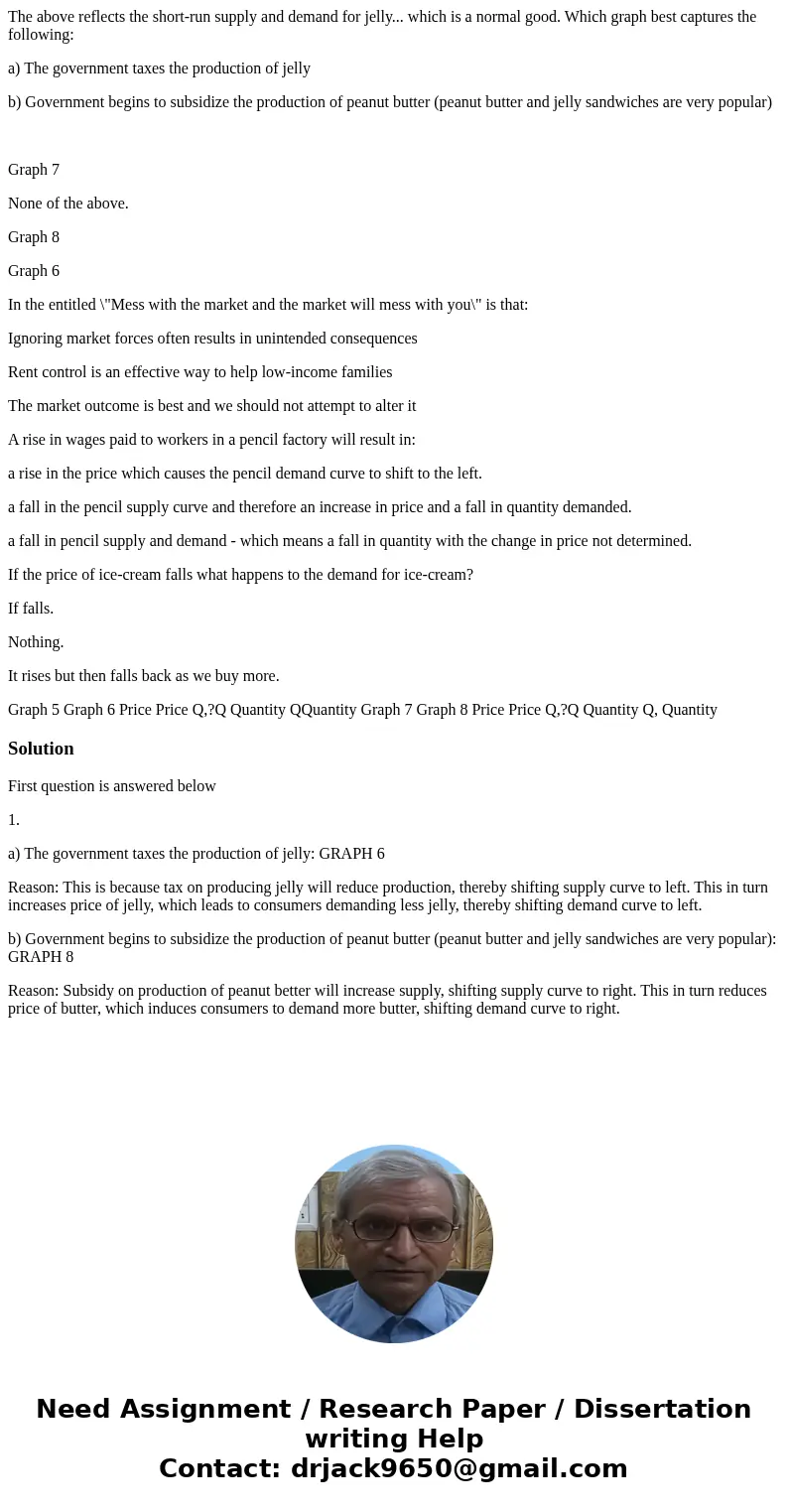The above reflects the shortrun supply and demand for jelly
The above reflects the short-run supply and demand for jelly... which is a normal good. Which graph best captures the following:
a) The government taxes the production of jelly
b) Government begins to subsidize the production of peanut butter (peanut butter and jelly sandwiches are very popular)
Graph 7
None of the above.
Graph 8
Graph 6
In the entitled \"Mess with the market and the market will mess with you\" is that:
Ignoring market forces often results in unintended consequences
Rent control is an effective way to help low-income families
The market outcome is best and we should not attempt to alter it
A rise in wages paid to workers in a pencil factory will result in:
a rise in the price which causes the pencil demand curve to shift to the left.
a fall in the pencil supply curve and therefore an increase in price and a fall in quantity demanded.
a fall in pencil supply and demand - which means a fall in quantity with the change in price not determined.
If the price of ice-cream falls what happens to the demand for ice-cream?
If falls.
Nothing.
It rises but then falls back as we buy more.
Graph 5 Graph 6 Price Price Q,?Q Quantity QQuantity Graph 7 Graph 8 Price Price Q,?Q Quantity Q, QuantitySolution
First question is answered below
1.
a) The government taxes the production of jelly: GRAPH 6
Reason: This is because tax on producing jelly will reduce production, thereby shifting supply curve to left. This in turn increases price of jelly, which leads to consumers demanding less jelly, thereby shifting demand curve to left.
b) Government begins to subsidize the production of peanut butter (peanut butter and jelly sandwiches are very popular): GRAPH 8
Reason: Subsidy on production of peanut better will increase supply, shifting supply curve to right. This in turn reduces price of butter, which induces consumers to demand more butter, shifting demand curve to right.

 Homework Sourse
Homework Sourse